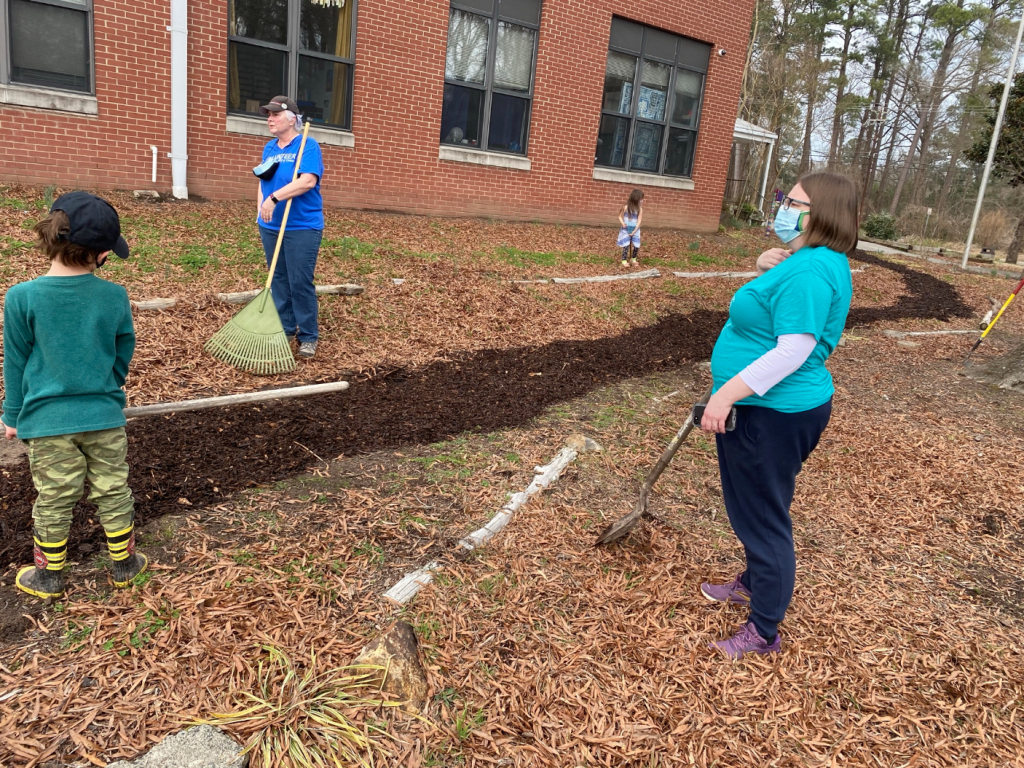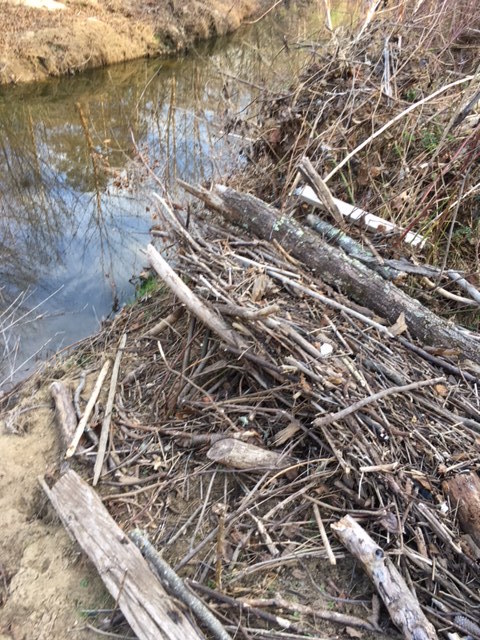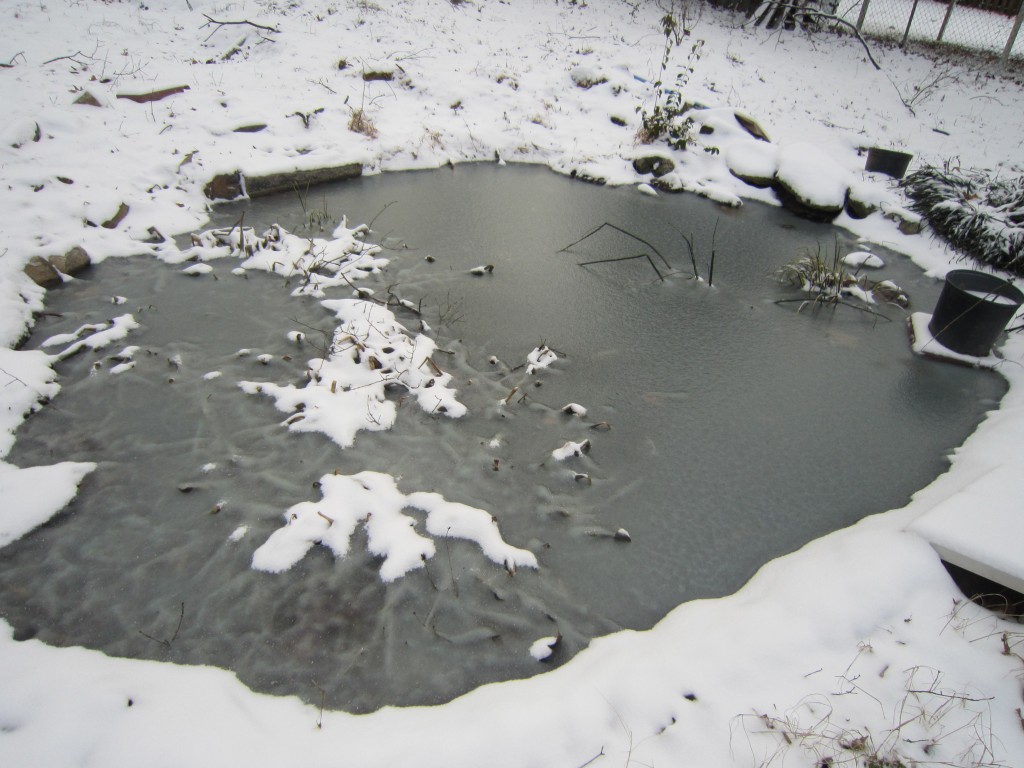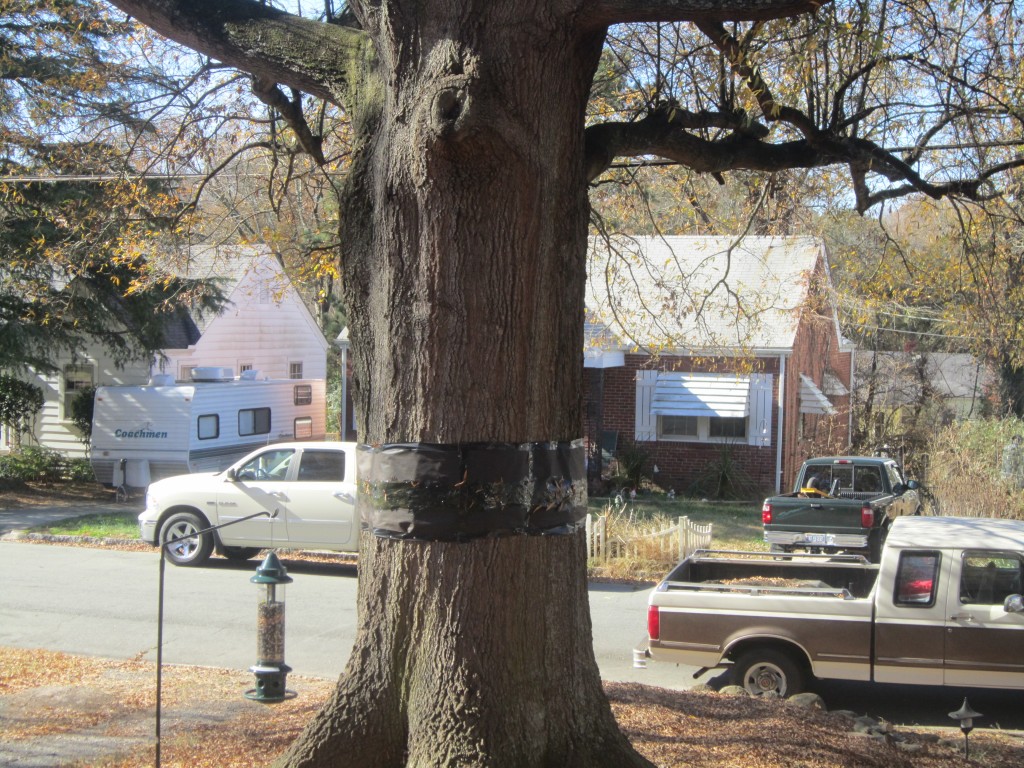Home » Durham Life
Category Archives: Durham Life
School Days
Monday is L’s first day of classes at Club Boulevard School and he is really excited. Yesterday we delivered some snacks and supplies.
Last Saturday we joined some of the parents, staff, and students in a mulching project for the school. Levi had a good time mulching the walkway with his principal, Ms. Phillips.
It was a lovely spring day and everyone was in good spirits. L. had a good time working alongside his peers.
The Pump Station Trail
This weekend Levi and I took advantage of the beautiful weather and took a hike and picnic on the Eno river. Our destination was the old pump station, which supplied water for the town of Durham from 1884 to 1926.
We stumbled across the old ruins as if we were in some enchanted forest.
We spent the rest of the afternoon playing in the river, skipping stones and looking for artifacts and enjoying the sounds of nature. For a while we were the only two in the forest, and magic was in the air.
Beavers in the Park
Every weekend I strap Levi to my back–all 28.5 pounds of him–and head out into the woods for a little father-and-son nature hike. We both have a good time at some of our favorite places like West Point on the Eno or Occoneechee Mountain. It’s a good workout for me, too–I’m reminded of my backpacking days in the Boy Scouts of America.
Last weekend we decided to stay a little closer to home with a short hike down to Northgate Park, our beautiful 17-acre city park just a couple of blocks from home. A good section of the park has been transformed into a natural habitat after a stream restoration project from a few years ago. Along the banks of Ellerbe Creek is a “no-mow” zone which has grown wild with river birch, pine trees and a variety of plants and brush.
Apparently a group of beavers like it too, and have taken up residence there. I had spotted a small lodge a couple of weeks ago when walking across the bridge, so Levi and I decided to investigate. We followed one of the little footpaths down to the banks of the Ellerbe in view of the lodge. I took Levi out of the backpack and we both sat for a few minutes.
It wasn’t long before we saw a beaver swim from one side of the creek towards the lodge, then disappear. Regretfully, I was not fast enough to take a picture with my iphone, but Levi can vouch for me. He saw it too and started pointing and babbling excitedly. He kept running in the direction of the lodge, and I kept pulling him back, afraid that a beaver might jump out at him.
We went back a few days later, hoping to get another glimpse of beaver. Although we didn’t see any this time, we found footprints in the sand and gnawed bits of wood everywhere. We also discovered a second, smaller lodge further downstream, as well as what I think was the beginning of a third next to a concrete pipe. In the coming months and years it will be interesting to see what develops. Will their construction projects have any negative impact on the stream restoration there, creating challenges for the City? I will have to have a chat with friends in City Stormwater Services. Who knows, maybe Durham will have a second Beaver Marsh Preserve some day.
Tree Cookies
This month we mourned the passing of this mighty oak, one of the original trees planted on Duke’s West Campus. It was all the buzz in the sociology-psychology building. Sadly, no one could recall the tree’s name. We’ll have to give it the posthumous name of a dead social scientist.
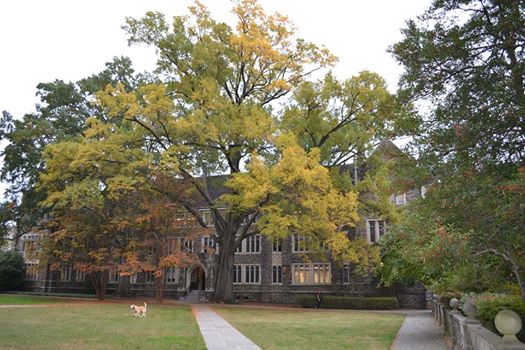 Apparently the tree was terminal, suffering from a deadly fungus, discovered with the aid of sonic tomography. A tomograph is a technology that produces a cross-sectional image of a three dimensional object. In the case of a tooth, or a tree, it lets you see the rot that might not be apparent from the outside. I’ve heard that a lot of the “city” trees in Durham have a lifespan of around 80 years, so I’m not surprised that Duke was monitoring these. West Campus construction started in the 1920s.
Apparently the tree was terminal, suffering from a deadly fungus, discovered with the aid of sonic tomography. A tomograph is a technology that produces a cross-sectional image of a three dimensional object. In the case of a tooth, or a tree, it lets you see the rot that might not be apparent from the outside. I’ve heard that a lot of the “city” trees in Durham have a lifespan of around 80 years, so I’m not surprised that Duke was monitoring these. West Campus construction started in the 1920s.
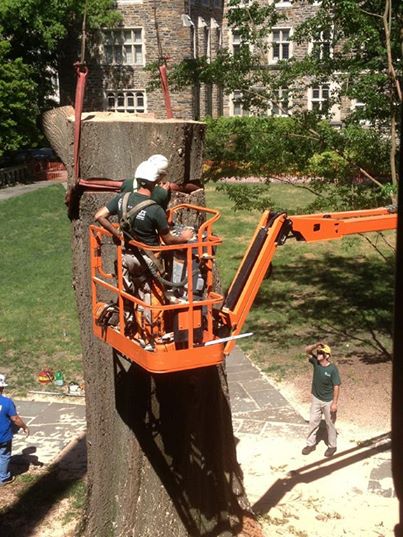 All week we watched with fascination and a little sadness as crews worked with a with a giant crane, hoisting huge pieces of the tree over the building into the parking lot on the other side.
All week we watched with fascination and a little sadness as crews worked with a with a giant crane, hoisting huge pieces of the tree over the building into the parking lot on the other side.
By Friday afternoon there was nothing left but a jagged stump.
Although the tree was gone, Duke promised that the good wood from the tree would be repurposed for use at the University and in the Durham community. Soon an e-mail circulated that there were tree cookies available for interested staff. At first I salivated on my keyboard, thinking of the Keebler Elves and their yummy confections. Then I remembered that I’d seen a one a long time ago in a science class. The teacher had shown us a tree cookie–a cross section of a stump or branch–to illustrate how trees grow. I remember counting the rings to figure out how long the tree had lived.
Last week I got the word that there was a tree cookie with my name on it. As I made the rounds, there seemed to be a cookie in every office. Bob Jackson proudly displays his cookie below.
 Call me master of the obvious, but this week I’ve been thinking about our attachments to trees and all the reasons we love them–their beauty, their majesty, the cool shade that they provide. Folks on one side of the building have suddenly found that their offices are a lot brighter. It’s sad to think that something that was planted when West Campus was just being built from what was Rigsbee Farm is now no more. Feeling a little sentimental, I started waxing poetic, going back to my favorite nature-poet, Robert Frost. Pausing for a second, I looked down at my desk to realize that I had been using my tree cookie as a coaster. Feeling just a little bit guilty, I wiped off the wetness and placed my cookie next to the window.
Call me master of the obvious, but this week I’ve been thinking about our attachments to trees and all the reasons we love them–their beauty, their majesty, the cool shade that they provide. Folks on one side of the building have suddenly found that their offices are a lot brighter. It’s sad to think that something that was planted when West Campus was just being built from what was Rigsbee Farm is now no more. Feeling a little sentimental, I started waxing poetic, going back to my favorite nature-poet, Robert Frost. Pausing for a second, I looked down at my desk to realize that I had been using my tree cookie as a coaster. Feeling just a little bit guilty, I wiped off the wetness and placed my cookie next to the window.
All creatures great and small
Winter Storm Leon moved into Durham last night, dumping several inches of snow along with plummeting temperatures. When I woke up this morning I noticed our feral cats, Sunshine and Gracie, weren’t at their usual spot waiting for me to come out and feed them. I saw their footprints in the snow and followed them to the edge of the pond.
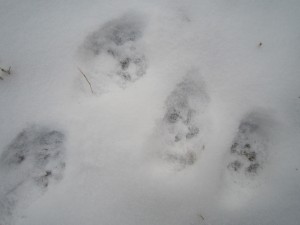 Farthing Pond had completely frozen over for the second time this year. The goldfish were hunkered down at the bottom of the pond, chilling until the next warm spell. I’m sure they’ll surface again if we get any sunshine in February. I decided to bust up the ice so the cats could have a little drinking water.
Farthing Pond had completely frozen over for the second time this year. The goldfish were hunkered down at the bottom of the pond, chilling until the next warm spell. I’m sure they’ll surface again if we get any sunshine in February. I decided to bust up the ice so the cats could have a little drinking water.
After a few minutes Gracie decided to come out of her hiding place and have breakfast.
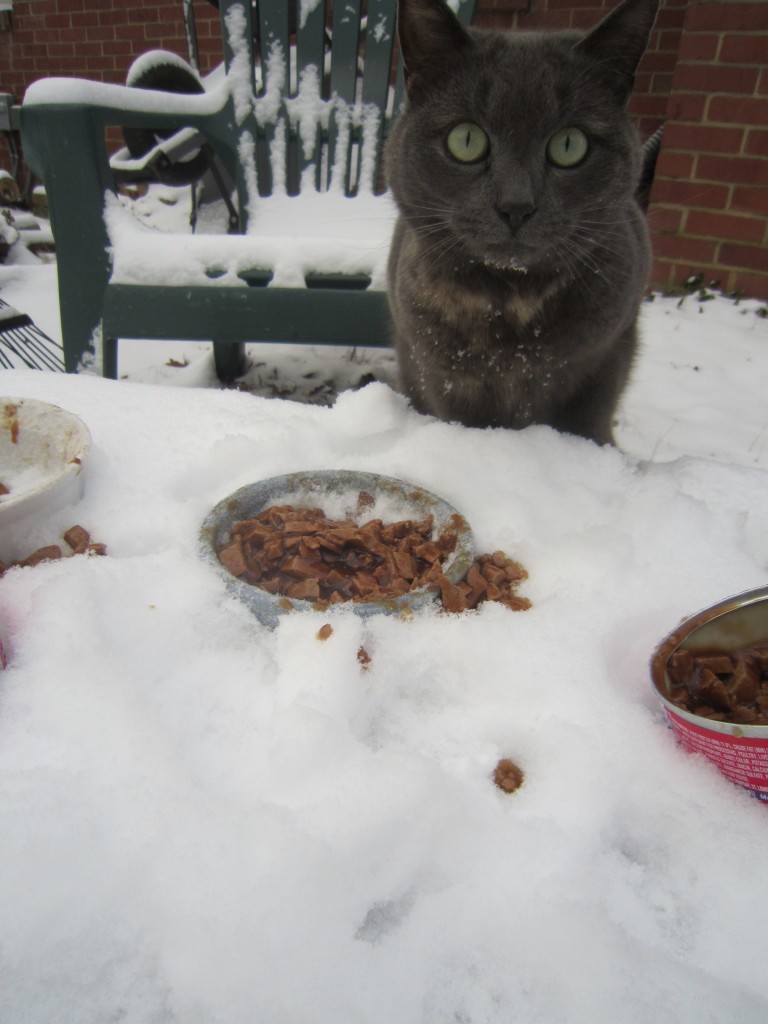
By the time I’d gotten back inside, Shawnna was checking out the bird scene in the front yard. The chickadees, cardinals and wrens were taking advantage of her squirrel-proof bird feeder. Franklin, our indoor tabby, could barely contain himself as he watched behind the screen door, making that funny chattering sound cats make, known as the kill-bite reflex.
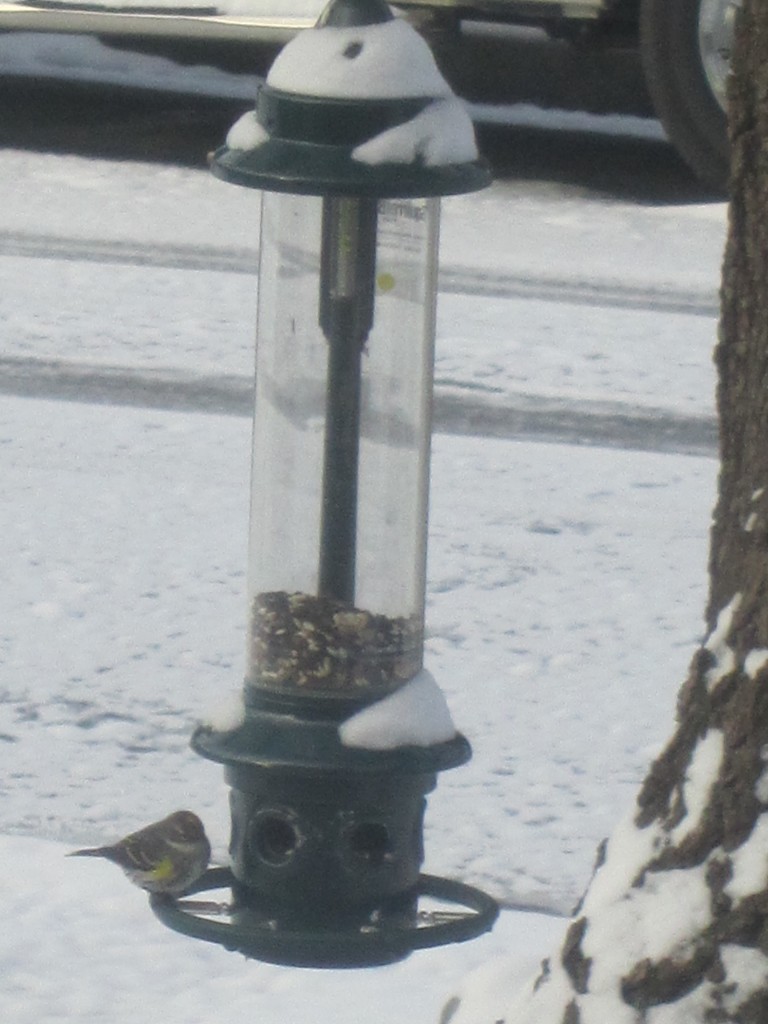 We’ve finally decided to join Project Feederwatch, the winter-long survey of birds sponsored by The Cornell Lab of Ornithology. They say that 292 species of birds have been spotted in the Durham area. Our favorite bird from today was a red-bellied woodpecker, who is just a little bit big for the bird feeder, but nevertheless decided to take a stab at it before giving up. Here he is hanging out on the trunk of the big oak tree in the front yard.
We’ve finally decided to join Project Feederwatch, the winter-long survey of birds sponsored by The Cornell Lab of Ornithology. They say that 292 species of birds have been spotted in the Durham area. Our favorite bird from today was a red-bellied woodpecker, who is just a little bit big for the bird feeder, but nevertheless decided to take a stab at it before giving up. Here he is hanging out on the trunk of the big oak tree in the front yard.
The coming plague
Triangle friends, I hope today’s headline scares you into reading this post. If you haven’t wrapped your oak trees yet, you’re running out of time. In December the female moths, after mating, will crawl up the tops of these trees and birth hundreds of green caterpillars unless they are stopped in their tracks. If you’re not scared yet, read my lamentful post from the spring.
This year I wrapped each tree with a band of cheap insulation covered by a second layer of tar paper. Yesterday I coated each tree-band with a ring of sticky Tanglefoot Glue, the adhesive that catches the moths.
I thought every store in the Triangle was sold out of this stuff, but it turns out Stone Brothers had family-sized tubs of it. Just like butter in a skillet, the glue went on better once it was heated up a little bit. I slopped it on with a stiff brush, learning after-the-fact that a putty knife would have been better.
The tree of greatest concern was “Old Cyclops,” the massive oak tree in our front yard that blots out the entire block from a Google-earth perspective.
He’s so named because of his one eye and small, gaping mouth. He’s so enormous that I used half a tub of glue on him.
Let’s hope this helps curb the worm infestation.
Another great reason to live in Durham
Urban farming gets an official OK from City Government:
http://www.thedurhamnews.com/2013/03/23/215030/urban-farming-gets-official-ok.html
